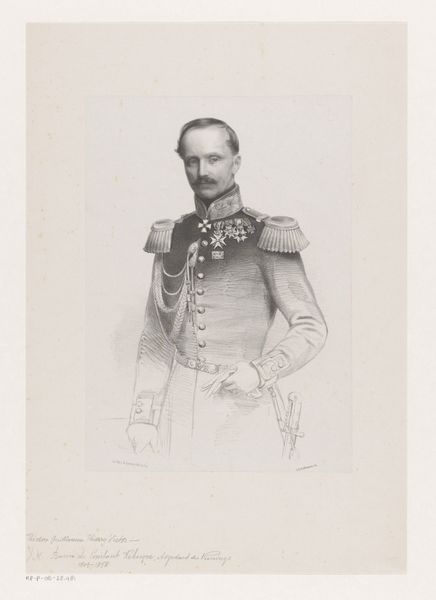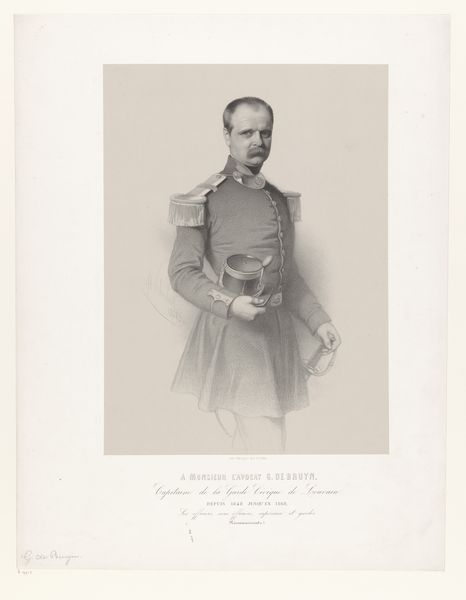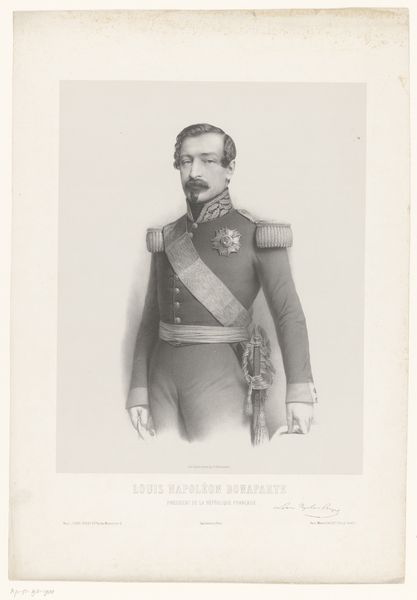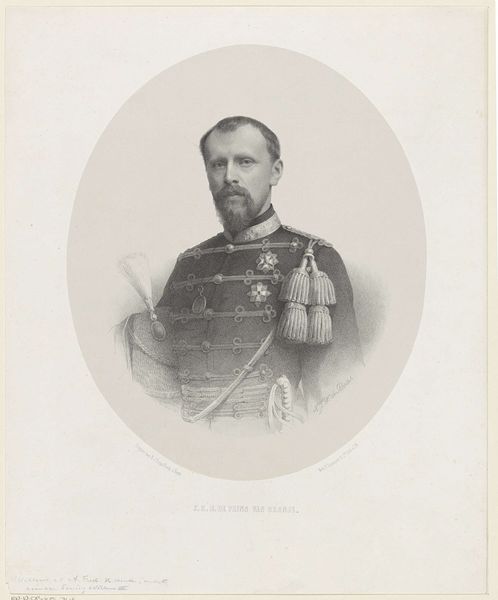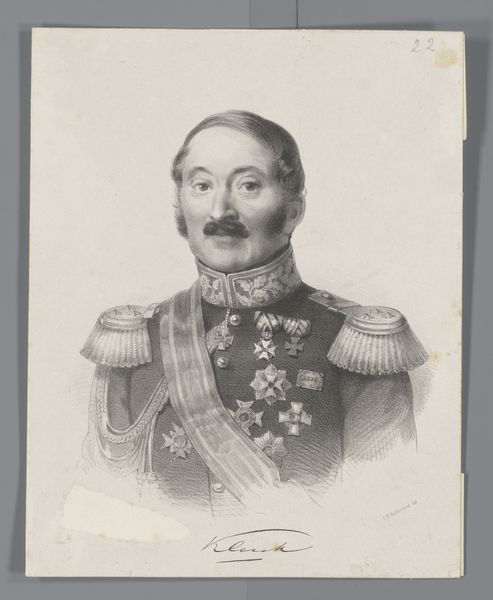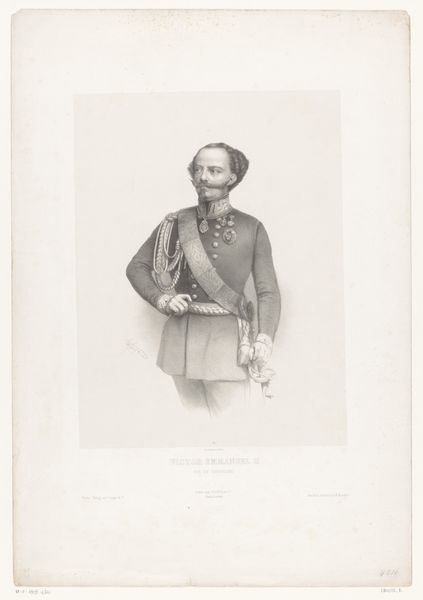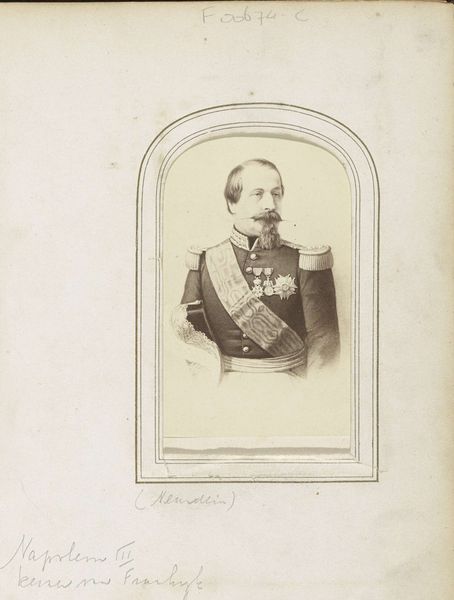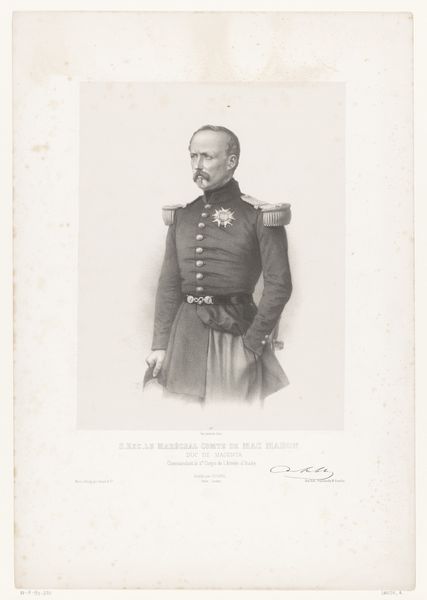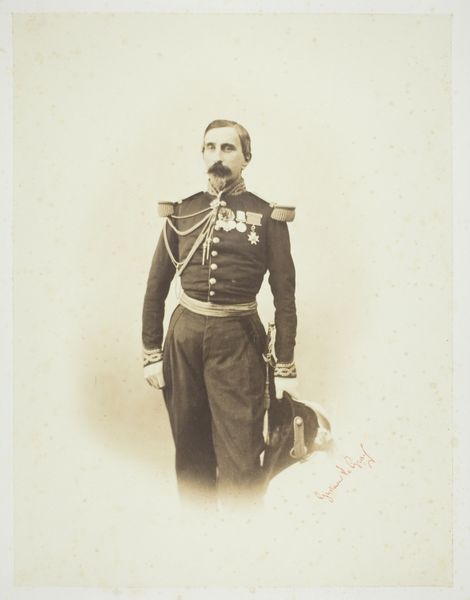
photography
#
portrait
#
archive photography
#
photography
#
historical photography
#
portrait reference
#
19th century
#
academic-art
Dimensions: height 897 mm, width 627 mm
Copyright: Rijks Museum: Open Domain
Editor: This is "Portret van een officier," or "Portrait of an Officer" by Adrien Canelle. It's a photograph dated sometime between 1851 and 1894. The detail is quite amazing, almost like a drawing. What do you see when you look at this image? Curator: I'm immediately drawn to the materiality of the image. Look at the process that went into producing this: the collodion process, the silver nitrate. Think about the labor involved in setting up the shot, preparing the chemicals. It's not just about capturing a likeness. It is an intensive material performance. Editor: That’s fascinating. It's easy to overlook the process when it looks so... classic. Curator: Exactly. The 'classic' aesthetic itself is a product of its material conditions and social context. This officer's uniform, his bearing – these are carefully constructed images reflecting power dynamics. What's he telling us about military rank and social aspiration? How does the photographic process either reinforce or undermine that? Consider how mass production influences how portraits were made at the time. Editor: It is interesting to think of how the materials influence not only the art-making but the image portrayed too. It feels almost propagandistic. The photo itself gives this man a certain authority just by existing, and its inherent reproducibility must have given it an immediate advantage for its purposes. Curator: Indeed, think about the availability of materials, how the industrialization of photography made images like these accessible. Consider, how does it challenge the hierarchy between painting and this emergent mechanical medium? It disrupts the established social structures surrounding image making. Editor: That definitely reframes how I see this portrait. It makes me think about accessibility, and the social implications of image creation in a completely new light. Curator: Precisely, analyzing the materials opens up questions of production, access, and representation. It moves beyond a simple portrait and asks what the image _does_ in the world.
Comments
No comments
Be the first to comment and join the conversation on the ultimate creative platform.

